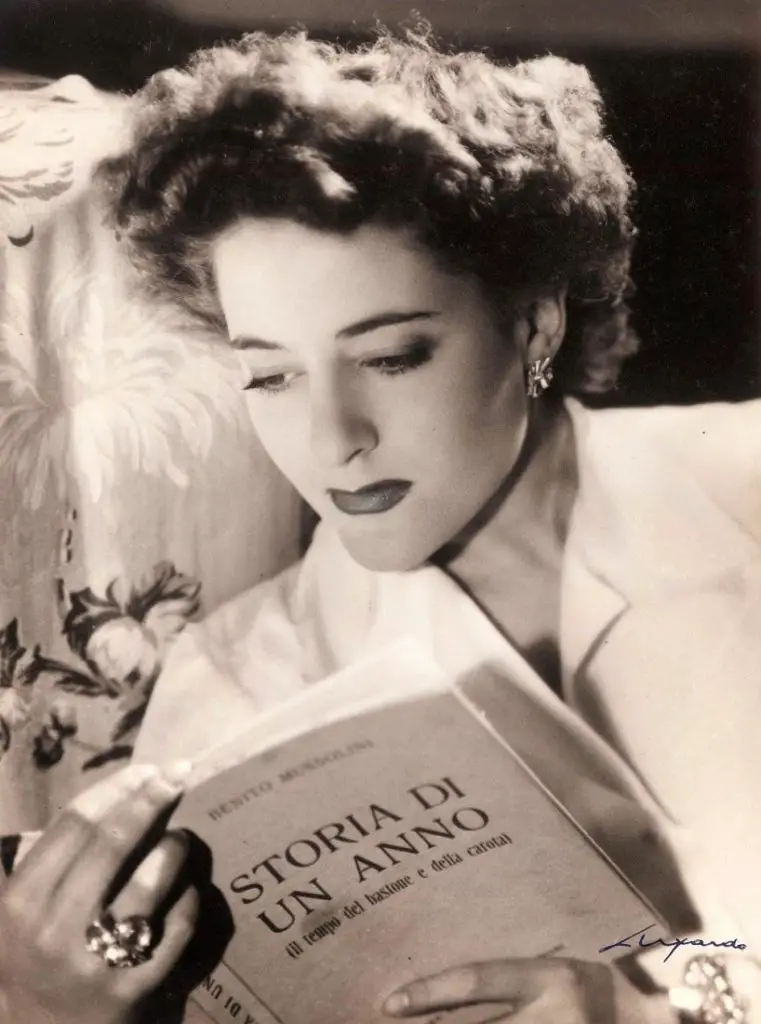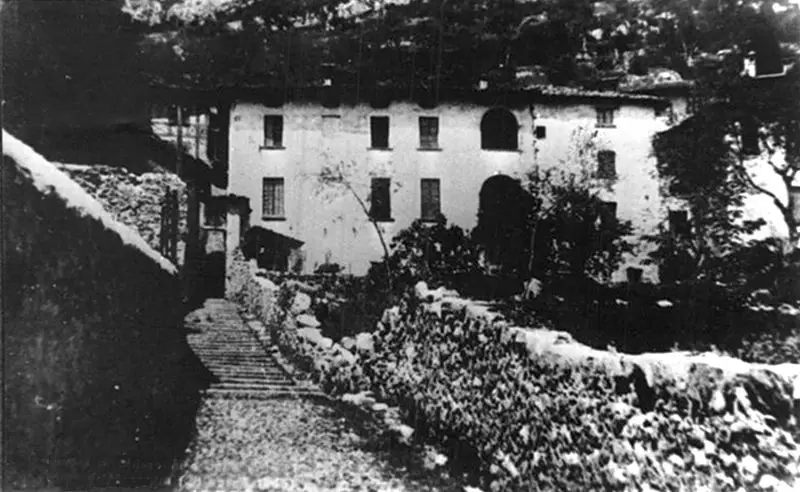Clara Petacci was the attractive young mistress of Benito Mussolini. Despite a 28-year age difference, the two maintained an affair until their capture and execution by Italian communist partisans. Clara Petacci died on 28 April 1945.
Background on Clara Petacci
Clarice Petacci, born in Rome on 28 February 1912, was the daughter of Francesco Saverio and Giuseppina Persichetti. Everyone knew her as Clara or Claretta.
From a young age, Clara desired to become someone important. She wanted a life of ease and desired a career in the film industry or as a painter.
She became engaged to Riccardo Federici, a Regia Aeronautica officer, and they married in 1934. But Clara Petacci’s life changed forever a few years before the marriage on one sunny day in April 1932.
Meeting Benito Mussolini
On 24 April 1932, the Lancia Astura carrying Claretta Petacci, her sister Myriam, their mother and Riccardo Federici, was traveling from Rome to the Ostia seaside. Along the way, a red Alfa 6C 1750 Gran Turismo Zagato, driven by Benito Mussolini, passed them.
Related: Benito Mussolini: Rise and Fall of the Italian Dictator
Related: Final Hours Leading to Death of Mussolini
Claretta, who had already sent numerous admiration letters to the Duce, immediately recognized him. So they commenced following Mussolini’s car. Claretta got his attention and managed to exchange a few words with Mussolini upon their arrival at the seaside town.
Clara Petacci implored him to grant her an audience because she admired him “as a dictator and as a man.” In response, Mussolini, who appreciated the adulation (especially by women), agreed to meet her at Palazzo Venezia. It would be the first of many encounters that became more and more frequent.
Separation From Riccardo Federici
It is not known with certainty when their intimate relationship began. Perhaps between 1932 and 1933, as noted in Petacci’s diary entry of 2 February 1933, seems to prove. However, Claretta separated from Federici in the spring of 1936. Between this period and the second half of 1937, the relationship between Petacci and Mussolini became more than casual.
Affair With Mussolini
With certainty, the rendezvous between the two lovers became regular at Palazzo Venezia during the second half of 1937. They managed to keep their relationship secret for several years, with only a small circle of individuals who knew about the affair. Mussolini called her several times a day, sometimes every twenty-thirty minutes. He would call her from Palazzo Venezia and his home but also from the other places where he had obligatory commitments. These calls not only helped him manage the relationship but also show her how important she was, especially given her extreme jealousy.
Claretta was indeed the only person with whom Mussolini could feel at ease and display his true feelings and emotions. In their meetings, he discussed his life, family, politics, and personal details regarding men and women with whom he had come into contact. Above all, he spoke about himself, how lonely and misunderstood he was in his enormous undertaking to ‘remake the Italians.’ She listened to him, indulged him, magnified him, and glorified him. We know all this information thanks to a detailed diary that Clara Petacci left behind. Her diary contains interesting details regarding Mussolini’s life that was unknown to the public view.
The Duce was generous with Claretta and her family. Mussolini helped her father’s medical practice. The career of Clara’s brother also benefited from her relationship with Mussolini. The Duce also commissioned her uncle to paint him several paintings. Even Clara’s sister enjoyed success as an actress because of the relationship. Mussolini granted Claretta a monthly allowance, gave her gifts, and, above all, contributed to the construction of the Camilluccia villa, where the Petacci family began residing in 1939.
Relationship During WW2
During the war, unfolding events progressively weakened Mussolini’s regime. Because of that, Mussolini tried re-define their relation, meeting her less often and reducing the number of phone calls.
On 25 July 1943, the Fascist Grand Council ousted Mussolini from power after a vote of no confidence. He was arrested and imprisoned later that day. Italian authorities also arrested Clara Petacci but released her on 8 September 1943 following the armistice.
Back in August 1943, national newspapers serving the new government of Marshal Piero Badoglio revealed Clara Petacci’s relationship with Mussolini. They disclosed all the benefits she and her family received while acting as Mussolini’s mistress. The press campaign revealed the level of corruption and discredited Mussolini and his regime to the Italian public.
On 12 September 1943, German troops rescue Mussolini in the Gran Sasso raid. He became propped up as the leader of the Italian Social Republic. Clara Petacci fled Rome to be Gardone to be close to Mussolini. But the times had changed. The old fascist guard was disappointed; some say even disgusted about the revelations of Benito and Clara’s relationship.
Clara Petacci, along with the acts of Galeazzo Ciano and Dino Grandi during the Grand Council ouster of Mussolini on 25 July 1943, became the symbol of the degeneration of fascism and political decay of the Duce.
During their final years, Mussolini and Claretta maintained a clandestine relationship as a means to reduce the risk of blackmail and threats in an already volatile situation.
Capture and Death
Petacci stayed by Mussolini’s side until the very end. On 18 April 1945, Clara followed Mussolini to Milan, and on the 25th, they fled north. Partisans captured them on 27 April 1945, along with dozens of other fascist leaders and their families as they traveled in a convoy to Como. After their capture, Clara requested to join Mussolini. They spent their last night together at the De Maria farmhouse at Bonzanigo di Mezzegra before their execution on the 28th by communist partisans.
The partisans transported the bodies to Piazzale Loreto in Milan. They were then subjected to abuse and mutilation by the crowd before being hung upside down on a metal trellis.
Sources
D. Gagliani, Clara Petacci in Dizionario Bibliografico degli Italiani, Vol.82 (2015).



